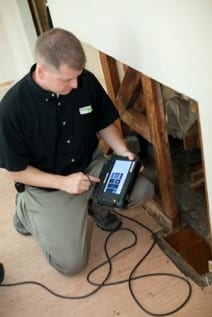In today’s industry, Field service software has gone from a niche application to a “must-have” solution for organizations looking to monitor and manage operations in the field. Service has become a critical revenue source for many companies. With the explosion in field service solution offerings, finding the right software has become even more challenging.
 Key selection criteria typically center on mobility and enterprise integration. “With today’s mobile workforce, the need to access enterprise data anywhere anytime puts mobile business intelligence and performance management capabilities at the top of the list of features and functions end users are most interested in,” says Sergey Martsinkian, manager of product marketing at Epicor Software.
Key selection criteria typically center on mobility and enterprise integration. “With today’s mobile workforce, the need to access enterprise data anywhere anytime puts mobile business intelligence and performance management capabilities at the top of the list of features and functions end users are most interested in,” says Sergey Martsinkian, manager of product marketing at Epicor Software.
Modern Mobile Devices are both “Robust” and “Inexpensive”
Real-time access via mobile devices to resource planning, parts tracking, and customer portal information helps workers in the field complete assignments and respond to customer requests faster. The result is an increase in mobile deployments and device types during the past several years. “Mobile devices have become so robust and so inexpensive that companies are deploying them like crazy,” says Kris Brannock, VP of corporate development at Vertical Solutions. “As a matter of fact, it’s moving so rapidly that few applications have been able to keep up. A year ago, most mobile teams used a handful of specialized, ruggedized devices, or they used BlackBerrys. Who would have thought that a field force would be using iPads, Androids, or iPhones?”
Tight integration with enterprise resource planning (ERP) and other business systems is also a critical component of any new field service deployment. by tying field activity to the back office, companies can shorten the billing cycle to just a few days. That can improve cash flow and productivity by eliminating manual data entry and other payment-related processes.
 Companies can now select between hosted and on-premise field service solutions, as well as systems that include a human capital management component. Although dispatch efficiency is still a central focus, these software systems increasingly include more integrated issue resolution and proactive exception handling functionality so that the technicians and contact center staff can work together more efficiently. “Customers, contract centers, and field techs may collaboratively diagnose issues before rolling the truck,” says Dave Duncan, director of service knowledge at Servigistics. “This triage may avoid the dispatch altogether or at least narrow the likely causes for visit preparation”
Companies can now select between hosted and on-premise field service solutions, as well as systems that include a human capital management component. Although dispatch efficiency is still a central focus, these software systems increasingly include more integrated issue resolution and proactive exception handling functionality so that the technicians and contact center staff can work together more efficiently. “Customers, contract centers, and field techs may collaboratively diagnose issues before rolling the truck,” says Dave Duncan, director of service knowledge at Servigistics. “This triage may avoid the dispatch altogether or at least narrow the likely causes for visit preparation”
Social Media Lets Workers React to Changes Faster
According to Brannock, social media functionality has also entered the service sector. Companies may establish a private cloud-computing infrastructure allowing employees across the company to communicate and share information about customers and repair procedures. Employees could subscribe to internal communication channels that fit therir role, much the same way people subscribe to RSS (really simple syndication) feeds or blogs or follow Facebook updates. “This kind of private ecosystem for social media is streamlining information thoughout the organization and enabling everyone to react so much more quickly to changes on the ground,” Brannock says. “It is dramatically changing communications for the better.”
To read the rest of this article, including whether rugged tablets are the future of field payment, head over to Field Technologies Online (subscription required).


Share this: